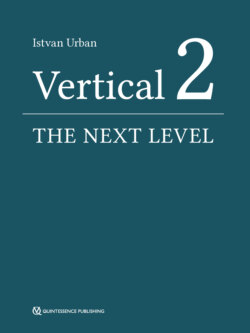Читать книгу Vertical 2: The Next Level of Hard and Soft Tissue Augmentation - Istvan Urban - Страница 27
На сайте Литреса книга снята с продажи.
Influence of baseline vertical deficiency on absolute and relative bone gain
ОглавлениеSix defects out of 65 were not completely regenerated. Five of these sites had baseline vertical deficiencies of ≥ 10 mm (Fig 2-3a), and one site with a 6-mm baseline deficiency was infected postoperatively. The probability of achieving complete regeneration was inversely proportional to defect size (P = 0.005). Each 1-mm addition to baseline height deficiency increased the likelihood of incomplete bone regeneration by 2.5 times. Having a baseline deficiency of 5 to 8 mm reduced the relative gain by 6% compared with having a baseline deficiency of < 5 mm (P = 0.045). Having a baseline deficiency of > 8 mm reduced the relative bone gain by 12% compared with having a baseline deficiency < 5 mm (P < 0.001) (Fig 2-3b). Multiple linear regression controlling for defect size, arch, healing time, and age (Table 2-3 (identified healing time to be a significant factor affecting vertical growth (P = 0.037).
Fig 2-2 (a) Correlation between defect size and vertical gain. The red dots represent cases that were not completely regenerated; five such cases had baseline vertical deficiencies measuring ≥ 10 mm. One defect with a base-line deficiency of 6 mm showed a null gain. (b) Relative vertical gain according to baseline deficiency (SD = standard deviation).
Fig 2-3 Absolute and relative vertical gain in the (a) maxilla, and (b) mandible (SD = standard deviation).
